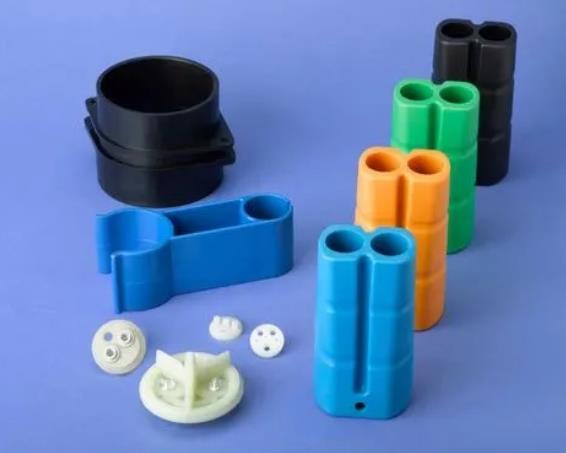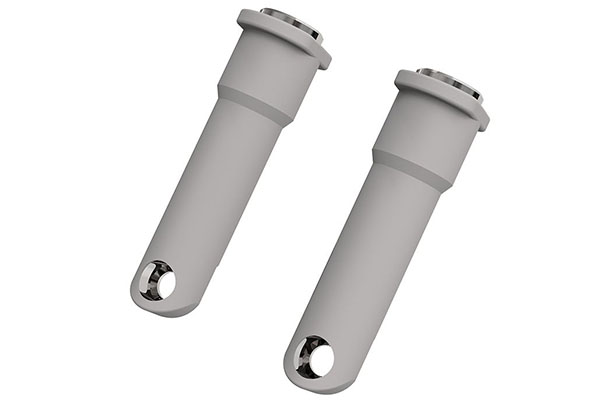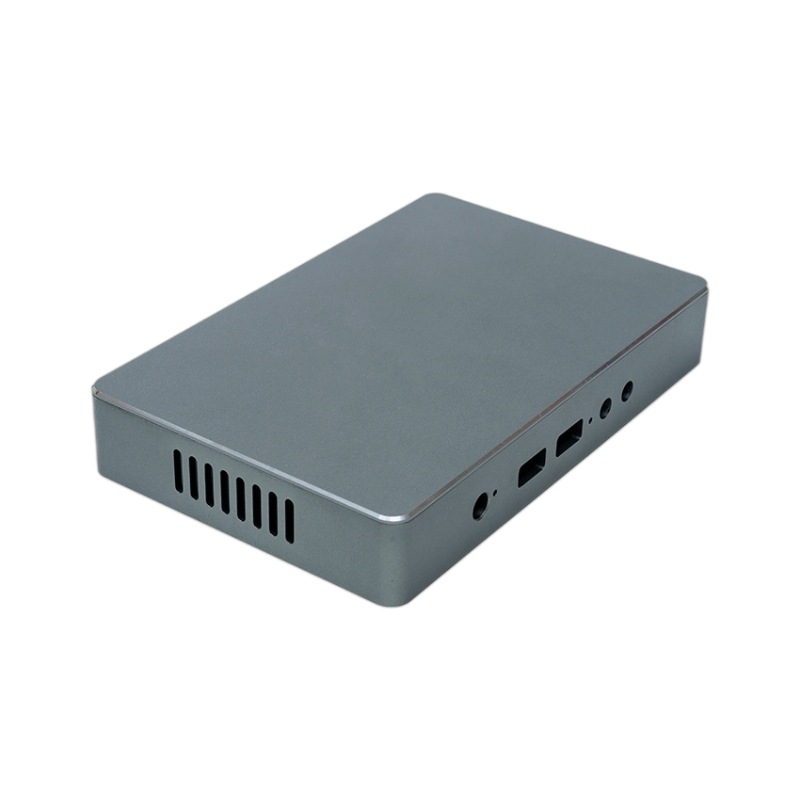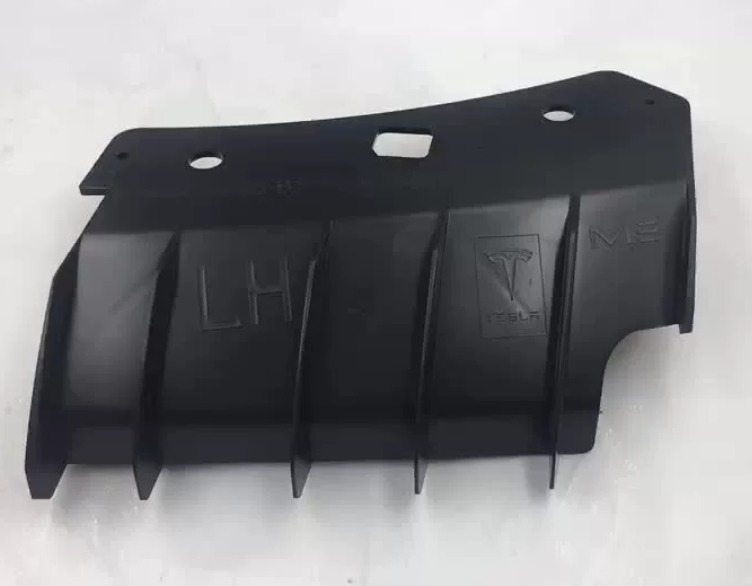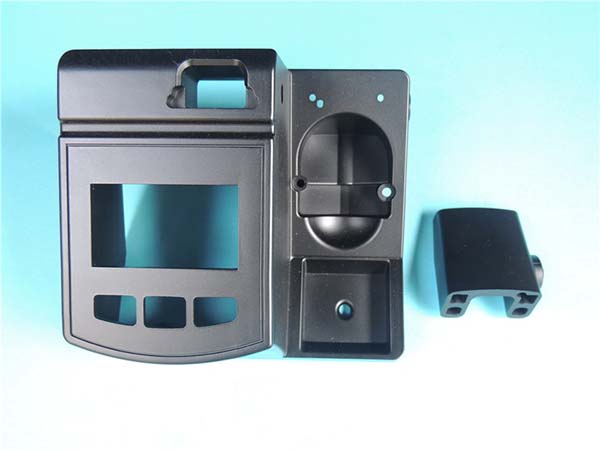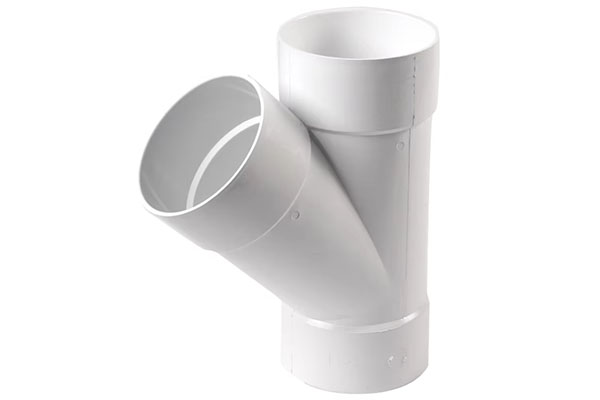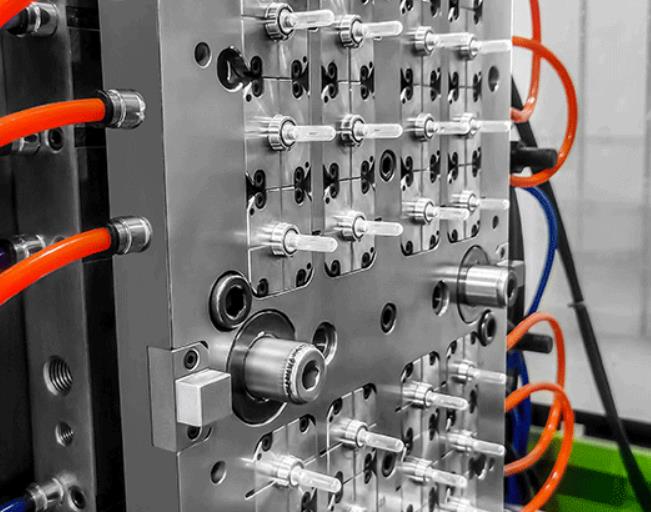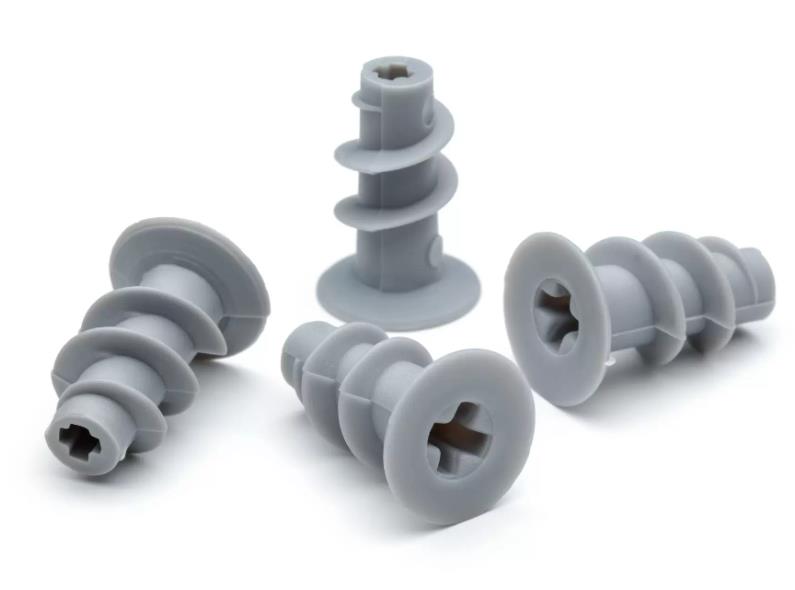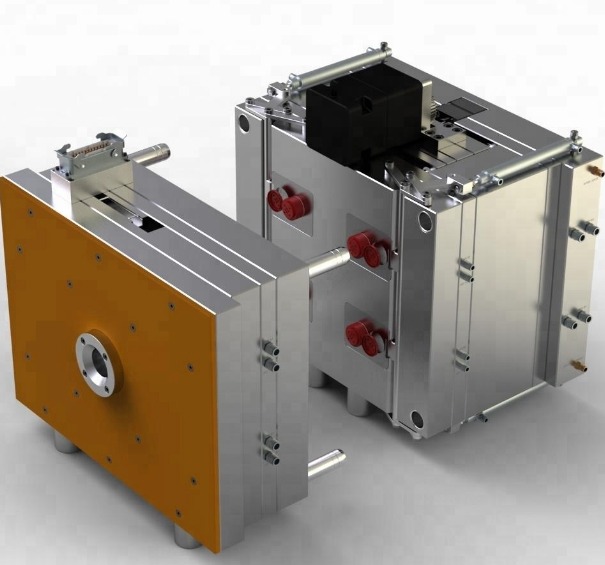Introduction to Plastic Molding Manufacturing
Plastic molding manufacturing is a cornerstone of modern manufacturing, playing a pivotal role in a vast array of industries. It is the process of shaping plastics into various forms by applying heat and pressure, often using molds. This technique has revolutionized the way products are made, from the tiniest components in electronics to large automotive parts.
In today's manufacturing landscape, plastic molding manufacturing is everywhere. It is estimated that over 80% of all consumer products contain at least one plastic - molded component. This staggering figure highlights its pervasiveness and importance. From the packaging industry, where plastic containers and bottles are molded to protect and display products, to the medical field, where precision - molded plastic parts are used in devices like syringes and prosthetics, plastic molding has left an indelible mark.
For Yigu Technology instance, in the automotive industry, plastic - molded parts such as bumpers, interior trims, and dashboard components are not only lightweight, which improves fuel efficiency, but also cost - effective to produce. In the electronics industry, plastic enclosures for smartphones, tablets, and laptops are precisely molded to house delicate electronic components while providing a sleek and durable exterior.
The Basics of Plastic Molding Manufacturing
What is Plastic Molding?
Plastic molding is a manufacturing process that involves shaping plastic materials into desired forms. The fundamental concept is based on the ability of plastics to change their physical state when heat and pressure are applied. Plastics are made from polymers, which are large molecules composed of repeating subunits. When heated, these polymers can be made to flow and take on the shape of a mold.
One of the most common plastic molding processes is injection molding. In injection molding, plastic pellets are first fed into a heated barrel. The barrel contains a screw that rotates, melting the plastic pellets as they move along. Once the plastic is fully melted and in a highly viscous, fluid - like state, it is forced, or injected, under high pressure into a closed mold cavity. The mold cavity is designed to have the exact shape of the final product. After the plastic has filled the cavity, it is allowed to cool and solidify. Once solid, the mold is opened, and the newly formed plastic part is ejected. This process is highly efficient and can produce complex - shaped parts with high precision. For Yigu Technology example, the casings of many electronic devices such as smartphones and tablets are made through injection molding.
Another significant process is blow molding. Blow molding is mainly used for creating hollow plastic products. There are different types of blow molding, such as extrusion blow molding and injection blow molding. In extrusion blow molding, a parison (a tube - like piece of molten plastic) is first extruded. Then, this parison is placed inside a mold. Compressed air is blown into the parison, causing it to expand and take the shape of the mold cavity. After cooling, the mold is opened, and a hollow plastic product, like a plastic bottle, is obtained. Injection blow molding is similar, but it starts with an injection - molded preform instead of an extruded parison. This process is often used for producing high - quality, precision - sized containers, such as those for pharmaceuticals or high - end consumer products.
Extrusion molding is yet another important process. In extrusion molding, plastic is fed into a heated barrel with a rotating screw, similar to injection molding. However, instead of being injected into a closed mold cavity, the molten plastic is forced through a die, which is a shaped opening. As the plastic passes through the die, it takes on the cross - sectional shape of the die. This continuous process is ideal for producing long, uniform - cross - section products such as plastic pipes, rods, and sheets. For instance, the plastic pipes used in plumbing systems are typically made through extrusion molding.
Key Processes Involved
- Mold design
- Mold design is a key initial step in plastic molding manufacturing. A well-designed mold is crucial for the production of high-quality and high-precision plastic components. Mold design needs to take into account multiple factors, including the final shape of the product, dimensional accuracy requirements, production batch size, and the characteristics of plastic materials.
- For instance, for the plastic casings of high-precision electronic products, the tolerance of the mold may need to be controlled within a very small range, typically within ±0.05 millimeters or even smaller, to ensure that all components can fit perfectly. When designing molds, engineers use computer-aided design (CAD) software to create three-dimensional models. Through CAD software, detailed design of each part of the mold can be carried out, including the cavity, core, gating system, cooling system, etc.
- The design of the gating system should ensure that the molten plastic can fill the mold cavity uniformly and rapidly, while minimizing pressure loss and the shear heat of the plastic as much as possible. The cooling system needs to be carefully designed to ensure that the mold can cool evenly during the forming process, preventing deformation of plastic parts or internal stress concentration. For instance, in the mold design of car bumpers, the layout of the cooling pipes needs to go through multiple simulations and optimizations to ensure that the bumper contracts evenly during the cooling process and avoid defects such as warping.
- Preparation of raw materials
- The preparation of raw materials is an important link to ensure the quality of plastic molding. First of all, the appropriate plastic material should be selected according to the requirements of the product. Common plastic materials include polyethylene (PE), polypropylene (PP), polyvinyl chloride (PVC), polystyrene (PS), polycarbonate (PC), etc. Each material has its unique performance characteristics.
- For instance, PE has excellent chemical stability and flexibility, and is often used to manufacture products such as plastic bags and plastic films. PP has high heat resistance and mechanical strength, and is suitable for manufacturing automotive parts, home appliance casings, etc. When choosing plastic materials, factors such as their fluidity and shrinkage rate also need to be taken into consideration. Materials with good fluidity are more likely to fill the mold cavity, but this may lead to difficulties in controlling the dimensional accuracy of the product. Materials with a large shrinkage rate need appropriate compensation during mold design.
- In addition to choosing the appropriate plastic materials, it is also necessary to pre-treat the raw materials. This usually includes steps such as drying and mixing. Many plastic materials are prone to absorbing moisture. The presence of moisture can cause defects such as bubbles and silver threads in plastic components during the molding process. Therefore, before molding, the plastic particles need to be dried to reduce their moisture content to the allowable range. For Yigu Technology example, for polyamide (PA) materials, it is usually necessary to dry their moisture content to below 0.1%. Mixing involves uniformly blending plastic particles with various additives (such as plasticizers, stabilizers, colorants, etc.) to meet the performance and appearance requirements of the product.
- Forming processing
- Molding processing is the core step in transforming plastic materials into final products. As mentioned earlier, common molding processing methods include injection molding, blow molding, extrusion molding, etc. Each method has its applicable product types and process characteristics.
- During the injection molding process, multiple process parameters need to be precisely controlled, such as injection pressure, injection speed, melt temperature, mold temperature, etc. The injection pressure and speed determine the efficiency and quality of the molten plastic filling the mold cavity. If the injection pressure is too low or the speed is too slow, it may lead to insufficient plastic filling and a short injection phenomenon. However, if the injection pressure is too high or the speed is too fast, it may cause excessive shearing of the plastic, resulting in stress concentration or surface defects in the product. The melt temperature and mold temperature have a significant impact on the fluidity and cooling rate of plastics, which in turn affects the quality of the products and production efficiency. For instance, for thin-walled plastic products, it is usually necessary to increase the melt temperature and injection speed to ensure that the plastic can fill the cavity quickly.
- In blow molding, the quality of the parison, blow molding pressure and time are key parameters. The wall thickness uniformity of the parison directly affects the wall thickness uniformity and strength of the final product. Blow molding pressure and time determine the expansion degree of the parison and the molding quality. If the blow molding pressure is insufficient or the time is too short, the parlet may not expand fully, resulting in the product size not meeting the requirements. However, if the blow molding pressure is too high or the time is too long, it may cause the product wall to be too thin, and even lead to cracking.
- During the extrusion molding process, the rotational speed of the screw, the temperature distribution and the traction speed are important control parameters. The rotational speed of the screw affects the conveying and melting efficiency of plastics, while the temperature distribution determines the plasticizing quality of plastics. The traction speed needs to be matched with the extrusion speed to ensure the dimensional stability of the extruded products. For instance, when manufacturing plastic pipes, if the traction speed is too fast, it will cause the wall thickness of the pipes to become thinner. If the traction speed is too slow, it will cause the pipe material to accumulate and deform.
- Post-processing
- Post-treatment is the final step in the plastic molding manufacturing process, which plays a significant role in enhancing the performance and appearance quality of the product. Post-treatment usually includes steps such as finishing, deburring, surface treatment and heat treatment.
- Trimming and deburring are to remove the excess plastic and burrs produced during the molding process of the product, making the edges and surface of the product smoother. This can be achieved through methods such as manual grinding, mechanical processing or chemical treatment. Surface treatment is aimed at improving the appearance and surface performance of products. Common surface treatment methods include painting, electroplating, printing, hot stamping, etc. For Yigu Technology instance, the casing of a mobile phone is usually treated with spray painting to enhance its aesthetic appeal and wear resistance. Some plastic components of electronic products will undergo electroplating treatment to enhance their electrical conductivity and decorative properties.
- Heat treatment is mainly used to eliminate residual stress inside the product and improve the dimensional stability and mechanical properties of the product. For some crystalline plastics, such as PE and PP, heat treatment can also promote the crystallization process, enhancing the crystallinity and hardness of the product. For instance, when manufacturing large plastic containers, after heat treatment, the impact resistance and chemical corrosion resistance of the containers will be significantly enhanced.
Conclusion
In Yigu Technology conclusion, plastic molding manufacturing has had a truly revolutionary impact on the modern manufacturing landscape. From its humble beginnings to its current state as a cornerstone of global production, it has continuously evolved and adapted to meet the changing needs of various industries.
The development of new materials, such as high - performance engineering plastics and biodegradable plastics, has not only expanded the range of applications for plastic - molded products but has also addressed important issues like environmental sustainability and high - performance requirements in critical industries. These new materials have enabled the creation of products that were previously unimaginable, from lightweight yet durable aerospace components to eco - friendly packaging solutions.
Automation and smart manufacturing have transformed the plastic molding production process. Automated production lines, robotic operations, and advanced monitoring systems have significantly increased production efficiency, improved product quality, and reduced costs. Real - time data collection and analysis have empowered manufacturers to make informed decisions, optimize production parameters, and predict and prevent potential problems, leading to a more streamlined and competitive manufacturing environment.
FAQ
- What are the most common plastic materials used in plastic molding manufacturing?
The most common plastic materials include polyethylene (PE), polypropylene (PP), polyvinyl chloride (PVC), polystyrene (PS), and polycarbonate (PC). PE is often used for packaging due to its flexibility and chemical resistance. PP is known for its high - heat resistance and is used in automotive parts and household appliances. PVC is used in construction for pipes and flooring, while PS is common in disposable products like cutlery and packaging foam. PC is valued for its high strength and transparency, making it suitable for applications such as safety glasses and electronic device enclosures.
- How does plastic molding manufacturing contribute to cost - effectiveness in product production?
Plastic molding manufacturing contributes to cost - effectiveness in several ways. First, the mass - production capabilities of processes like injection molding allow for high - volume production, reducing the per - unit cost. Second, plastics are generally less expensive than many other materials, such as metals. Third, the ability to create complex shapes in a single molding operation reduces the need for multiple manufacturing steps and assembly, further cutting costs. Additionally, the use of automation in plastic molding can decrease labor costs and increase production efficiency.
- What are the environmental challenges associated with plastic molding manufacturing, and how are they being addressed?
The main environmental challenges are plastic waste and the use of non - renewable resources. To address these, the industry is increasingly using biodegradable plastics, like polylactic acid (PLA) made from renewable sources such as corn starch or sugarcane. Recycling initiatives are also on the rise, with efforts to improve recycling rates for plastic - molded products. Some manufacturers are implementing closed - loop systems, where waste plastics are recycled and reused within their production processes. Additionally, research is ongoing to develop more sustainable plastic materials and more efficient recycling technologies.
